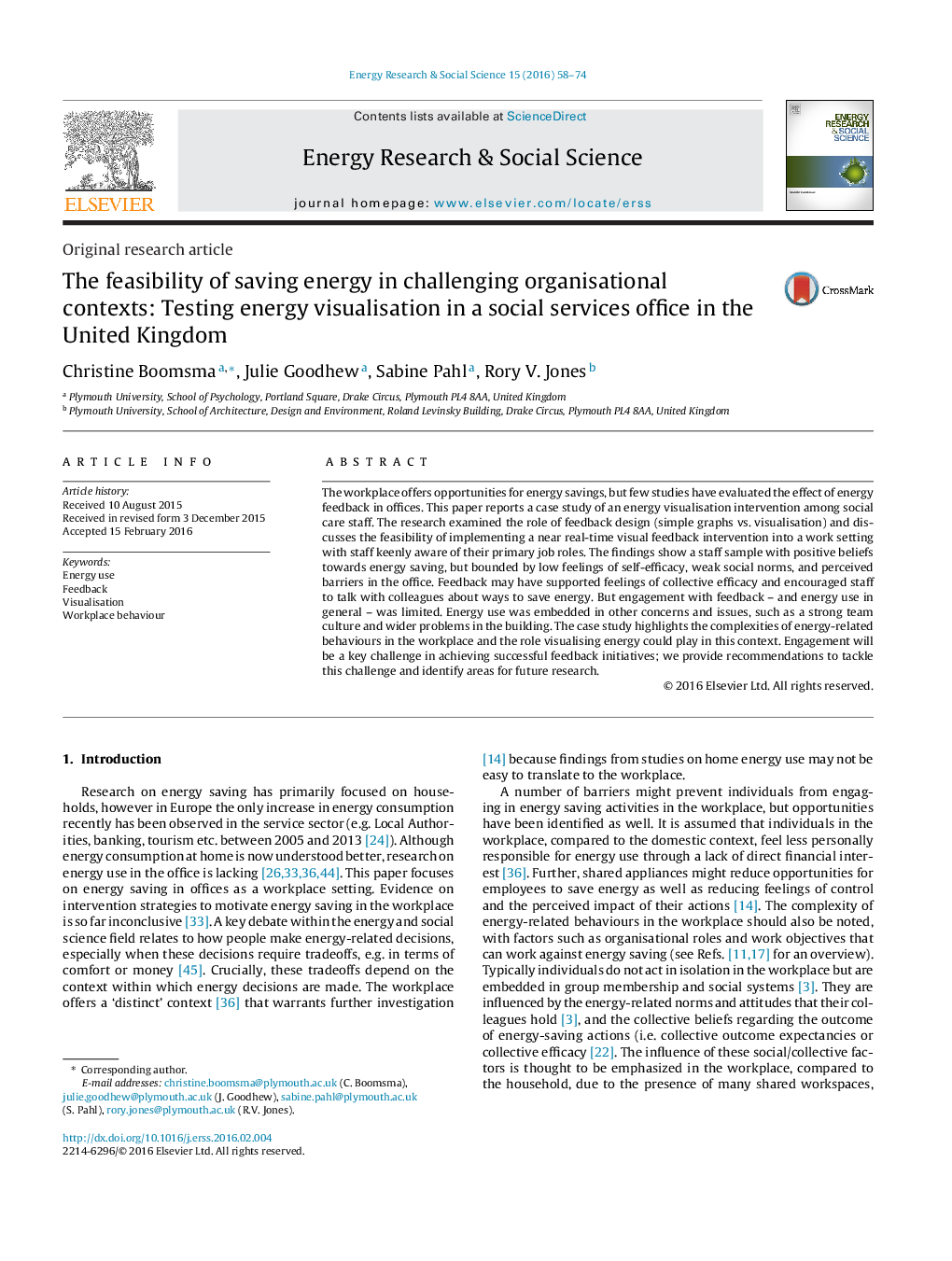| Article ID | Journal | Published Year | Pages | File Type |
|---|---|---|---|---|
| 6558159 | Energy Research & Social Science | 2016 | 17 Pages |
Abstract
The workplace offers opportunities for energy savings, but few studies have evaluated the effect of energy feedback in offices. This paper reports a case study of an energy visualisation intervention among social care staff. The research examined the role of feedback design (simple graphs vs. visualisation) and discusses the feasibility of implementing a near real-time visual feedback intervention into a work setting with staff keenly aware of their primary job roles. The findings show a staff sample with positive beliefs towards energy saving, but bounded by low feelings of self-efficacy, weak social norms, and perceived barriers in the office. Feedback may have supported feelings of collective efficacy and encouraged staff to talk with colleagues about ways to save energy. But engagement with feedback - and energy use in general - was limited. Energy use was embedded in other concerns and issues, such as a strong team culture and wider problems in the building. The case study highlights the complexities of energy-related behaviours in the workplace and the role visualising energy could play in this context. Engagement will be a key challenge in achieving successful feedback initiatives; we provide recommendations to tackle this challenge and identify areas for future research.
Keywords
Related Topics
Physical Sciences and Engineering
Energy
Energy (General)
Authors
Christine Boomsma, Julie Goodhew, Sabine Pahl, Rory V. Jones,
